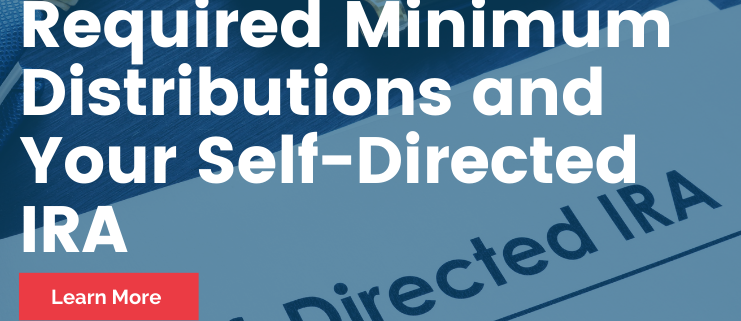Required Minimum Distributions and Your Self-Directed IRA
When you save up for retirement, do you know that the money you’re putting away might have to come out at a certain point? They’re called RMDs, or Required Minimum Distributions. And when you make before-tax contributions to a retirement account—whether it’s a Self-Directed IRA or not—you have to take them out after reaching a certain age. This way, the government makes sure that it is able to tax the income you’ve put aside. But the advantage to you is that this money can grow in your tax-protected account, which helps you save money for retirement. Here’s how RMDs work and how they can fit into your Self-Directed IRA.
Required Minimum Distributions in Self-Directed IRAs: The Basics
The IRS mandates RMDs to ensure your retirement funds are taxed eventually. For a Self-Directed Traditional IRA, for example, the rules are the same as for any other Traditional IRA. Once you turn a certain age, you’re required to start taking distributions from your account. (Note: The specific amount is calculated based on your account balance and life expectancy.)
The purpose of RMDs? Preventing individuals from deferring taxes indefinitely. Without RMDs, the taxes might never apply. And keep in mind that if you fail to take the required distribution, the penalty can come with severe fines.
RMDs apply to Traditional IRAs, SEP IRAs, and SIMPLE IRAs, but not to Roth IRAs during the account holder’s lifetime. This is one reason many investors like Roth IRAs—which is another option to consider.
Planning for RMDs with a Self-Directed IRA
Why bother planning for RMDs? It can help minimize taxes and ensure a steady income stream during retirement. As you might know reading our website, a Self-Directed IRA means have a broader range of investment options compared to traditional retirement accounts. And this can factor into how you plan for your RMDs.
For example, you’ll have to factor in whether you have sufficient liquidity in the account when it’s time to take out RMDs. If all of your retirement assets are tied up in real estate, this can be a bit complicated. Instead, good planning can mean that part of your portfolio is in easily accessible assets like cash or publicly traded securities. Illiquid investments, like real estate or private equity, can make it tricky when it’s time for the RMDs.
Another approach is to convert a portion of your Traditional IRA to a Roth IRA. While this conversion creates a taxable event, it can also reduce future RMDs. After all, Roth IRAs are not subject to RMDs during the owner’s lifetime. This strategy can be particularly beneficial if you anticipate being in a higher tax bracket in the future.
Managing RMDs and Taxes the Right Way
Knowledge is power. That’s why it’s crucial to understand the tax implications of RMDs. Since distributions from a Traditional Self-Directed IRA are considered taxable income, they can impact your overall tax situation. Proper planning can help mitigate these effects.
Consider spreading out large distributions to avoid bumping into a higher tax bracket. But be careful. You’ll have to think about your individual tax needs. Consulting with a tax advisor can provide personalized strategies to manage your RMDs effectively and minimize tax liabilities.
RMDs are an integral part of retirement planning with a Self-Directed IRA. Understanding them means understanding your account’s future. Don’t be intimidated by these—instead, take hold of your future by knowing what your plan is. That’s the appeal of Self-Directed IRAs: you get to call the shots. If you’re interested in learning more about managing RMDs with a Self-Directed IRA, call 866-7500-IRA.



